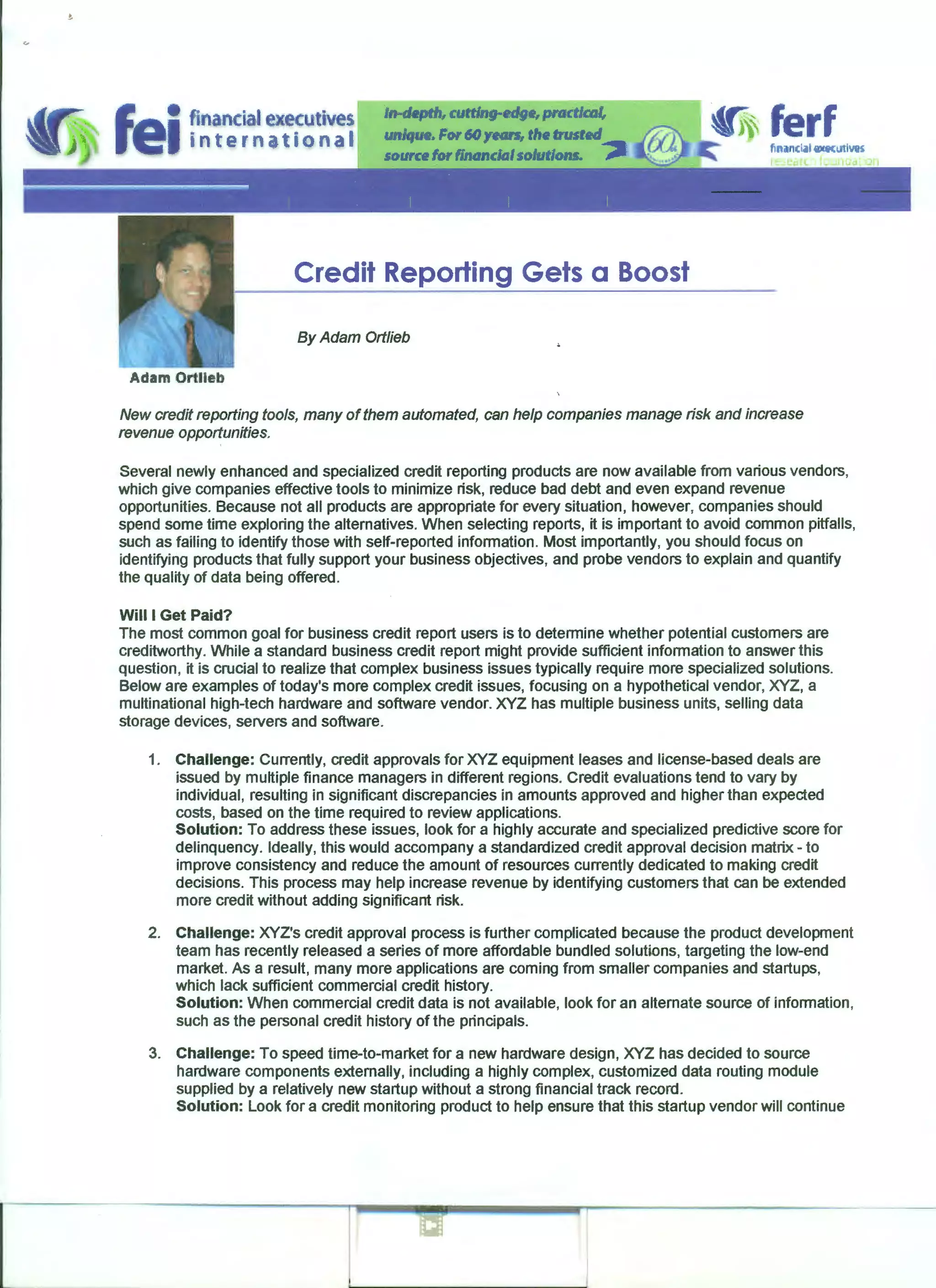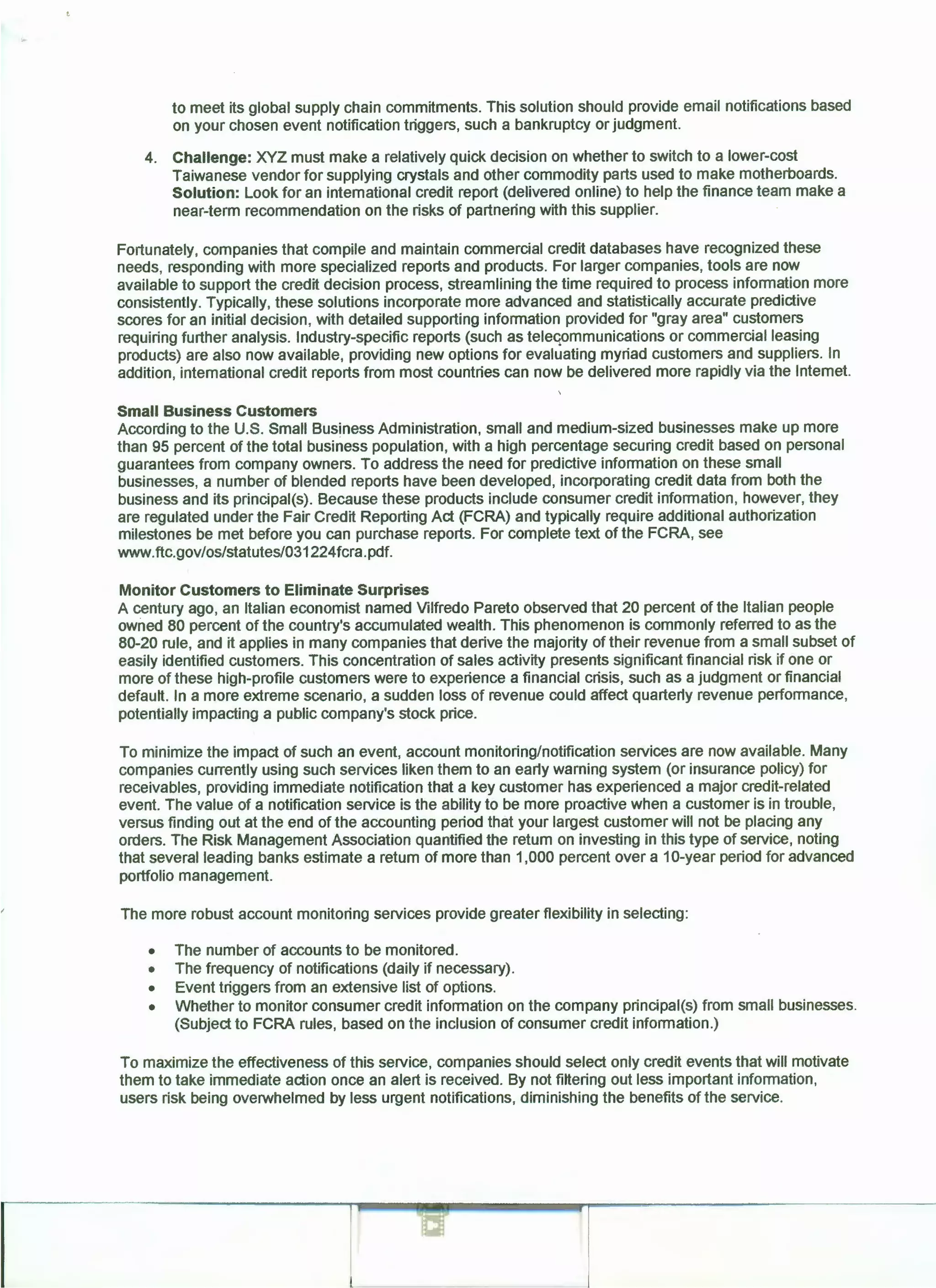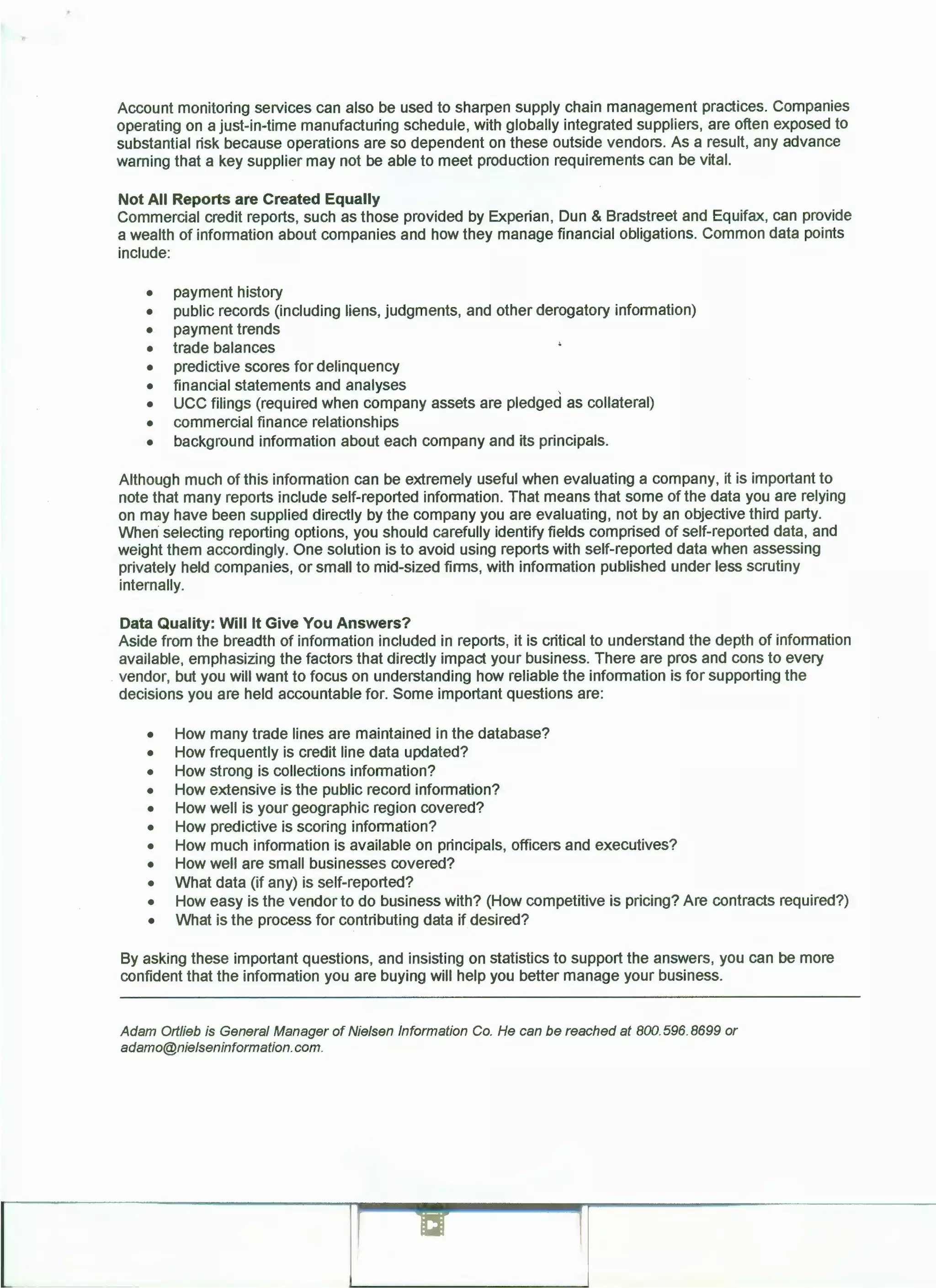New credit reporting tools can help companies manage risk and increase revenue. Several newly enhanced specialized credit reporting products are available from various vendors to minimize risk, reduce bad debt, and expand revenue opportunities. It is important to select reports that fully support business objectives and avoid common pitfalls like relying on self-reported data. The quality and depth of data is crucial, and companies should ask questions about data coverage, predictive accuracy, and data sources to ensure reports will provide useful answers.


